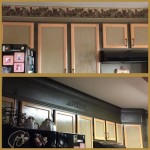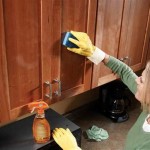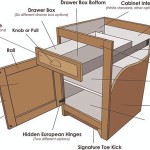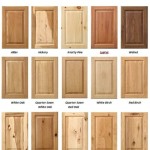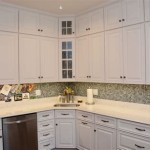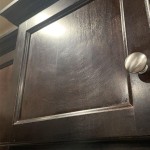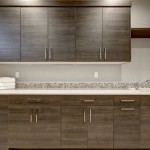Building Raised Panel Kitchen Cabinet Doors: A Comprehensive Guide
Building raised panel cabinet doors is a rewarding project that allows homeowners to personalize their kitchens with custom designs and high-quality materials. The process involves several distinct steps, each requiring precision and attention to detail. This guide will delve into the crucial aspects of building raised panel kitchen cabinet doors, providing a step-by-step explanation to empower DIY enthusiasts with the necessary knowledge.
Choosing the Right Materials
The first step in building raised panel cabinet doors is selecting the right materials. The most common choices for cabinet door construction include:
- Wood: Solid wood, such as maple, cherry, or oak, offers durability and a classic aesthetic. Softwoods like pine and alder are more budget-friendly options.
- Plywood: Plywood provides stability and resistance to warping. Baltic Birch plywood is known for its excellent quality and smooth surface.
- Medium-density fiberboard (MDF): MDF is a cost-effective option that offers a consistent surface for painting or staining. However, it is less durable than wood or plywood.
The choice of material depends on factors such as budget, desired look, and intended use. For example, kitchens with high moisture levels might benefit from plywood or MDF, while solid wood is preferable for its timeless appeal.
Creating the Door Frame and Panel
Once the material is chosen, the next step is to create the door frame and panel. This involves cutting the wood or plywood to the desired dimensions and assembling them using joinery techniques such as dado joints, rabbet joints, or biscuit joints. The frame consists of four pieces that form a rectangle, while the panel fits inside the frame.
The panel can be made from a single piece of wood or plywood, or it can be constructed using multiple pieces joined together. The shape of the panel determines the overall look of the door. Common options include:
- Flat panel: A simple and classic design, featuring a flat surface.
- Raised panel: A more ornate design, with the panel raised above the frame.
- Ogee panel: A decorative panel with a curved profile.
The panel shape can be achieved using various techniques, including routing, molding, or using pre-made panel profiles.
Assembling and Finishing the Door
After the frame and panel are created, they are assembled using a combination of glue, screws, and clamps. The panel should be flush with the frame, creating a smooth and even surface. Once the glue has dried, the door is ready for finishing.
Finishing the door involves sanding, priming, and painting or staining. Sanding removes any imperfections and creates a smooth surface for the finish. Priming helps to create a barrier between the wood and the final finish, ensuring even color application. The final finish can be paint, stain, or a combination of both.
Key Considerations for Building Raised Panel Kitchen Cabinet Doors
Building raised panel cabinet doors requires meticulous attention to detail and precise execution. Several key considerations ensure a successful outcome:
1. Accuracy and Precision
Accurate measurements and precise cuts are essential for building cabinet doors. Using a combination of measuring tools, such as a tape measure, ruler, and square, minimizes errors and ensures consistent dimensions.
2. Joinery Techniques
The choice of joinery techniques affects the strength and durability of the door. Dado joints, rabbet joints, and biscuit joints are common options that provide a secure and stable connection between the frame and panel.
3. Grain Direction
When using solid wood, it's crucial to consider the grain direction. The panel should be oriented with the grain running vertically, preventing warping and ensuring stability. If the grain runs horizontally, the panel is more prone to warping and shrinkage.
4. Finishing Techniques
The finishing techniques used can significantly impact the final appearance and durability of the door. Proper sanding, priming, and painting or staining ensure a smooth, even, and long-lasting finish. It’s essential to allow ample drying time between each step.
Conclusion
Building raised panel kitchen cabinet doors offers a rewarding and personalized approach to customizing kitchens. This article has outlined the key steps involved in the process, from selecting the appropriate materials and creating the frame and panel to assembling the door and applying the final finish. By understanding these steps and adhering to best practices, both novice and experienced DIY enthusiasts can successfully craft custom doors that enhance the beauty and functionality of their kitchens.

Making Raised Panel Doors On A Tablesaw Fine Homebuilding

Do It Yourself Panel Doors Dspoke Diy Cabinet Building Kitchen Cabinets Raised

Shaker Cabinets Vs Raised Panel Choice Cabinet

Shaker Cabinets Vs Raised Panel Choice Cabinet

Cabinet Door Styles 101 Shaker Raised Panels And More Vevano

Bring Elegance To Your Kitchen With Raised Panel Cabinets

How To Build Custom Cabinets Part 3

Making Cathedral Raised Panel Doors 288

Popular Cabinet Door Styles Trends In 2024 Model Remodel
Cabinet Door Styles 101 Shaker Raised Panels And More Vevano
Related Posts

